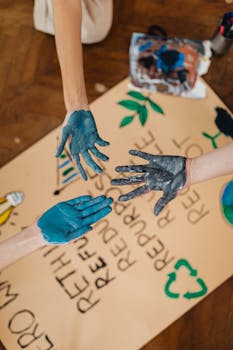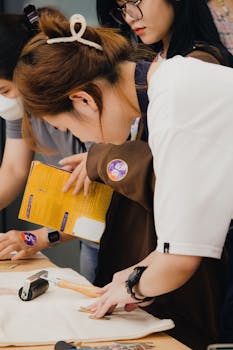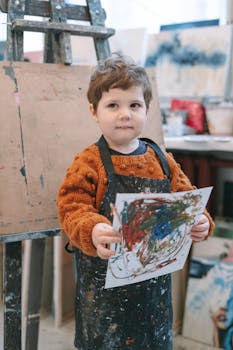In recent years, traditional crafts have experienced a resurgence, blending historical techniques with contemporary innovations. This fusion has created a dynamic space where artisans reinterpret age-old practices, making them relevant in today’s marketplace.
The evolution of these crafts reflects a deeper understanding of sustainability, aesthetic value, and consumer demand. Artisans are leveraging technology to enhance their craft while maintaining the authenticity of traditional methods. This article explores the modern approaches to traditional crafts across various disciplines.
Through an examination of different crafts and techniques, we can appreciate how these modern interpretations not only celebrate cultural heritage but also pave the way for future generations of artisans. Let’s delve into the world of traditional crafts.
Craft Revival: A New Appreciation
Craft revival refers to the renewed interest in traditional arts and crafts, largely driven by seeking authenticity in a digital age. As consumers become more conscious of their choices, handmade products are increasingly cherished.
This revival has sparked a wave of creativity, encouraging artisans to explore new designs while staying grounded in traditional techniques. Local markets and online platforms serve as vital spaces for showcasing these crafts.
Moreover, this trend intertwines with a desire for sustainability, as handcrafted items often promote environmental consciousness. Each piece carries a story, linking the artisan to their heritage and community.
Consequently, many artisans are advocating for their craft’s cultural significance, enriching today’s dialog surrounding identity and roots. This cultural revival plays a crucial role in preserving these crafts for future generations.
Ultimately, craft revival not only empowers artisans but also educates consumers about the value behind handmade goods, creating bonds through shared appreciation. As this trend continues, we witness a vibrant tapestry of creativity and tradition.
Integration of Technology in Traditional Crafts
Technology has revolutionized how traditional crafts are produced, marketed, and consumed. From digital design tools to e-commerce platforms, artisans can now reach a global audience.
Laser cutting and 3D printing, for example, allow artisans to execute intricate designs that would be challenging by hand. Such tools enable artisans to innovate while respecting traditional techniques.
Social media has become an essential marketing tool, allowing craftspeople to showcase their work through platforms like Instagram. Visual storytelling has transformed how artists engage with their audience, fostering connections and building communities.
This blend of artistry and technology introduces new possibilities, enabling artisans to collaborate across regions and cultures. Innovative partnerships emerge, pushing the boundaries of traditional craftsmanship.
Ultimately, technology serves as a facilitator rather than a replacement. By enhancing traditional methods, artisans continue to honor their roots while embracing modernity in their craft.
Revitalizing Materials for Modern Crafts
Using sustainable materials is a growing trend among contemporary artisans. By shifting focus to eco-friendly alternatives, they reduce environmental impacts while preserving traditional techniques.
Recycled or upcycled materials are now popular in various crafts, such as textiles, ceramics, and woodworking. This approach provides not only environmental benefits but also unique, one-of-a-kind pieces.
Moreover, artisans are exploring local sourcing, emphasizing the importance of regional materials. This not only supports local economies but also connects the craft to its geographical roots.
The use of innovative materials, such as biodegradable glues and non-toxic dyes, ensures craftsmanship aligns with modern ethical standards. Thus, artisans strive for balance in beauty, functionality, and sustainability.
As artisans continue to experiment with materials, the merging of tradition and innovation yields exceptional results, captivating modern consumers seeking both aesthetics and responsibility.
Community Engagement through Craft
Community engagement is at the heart of many traditional crafts. Modern artisans are creating workshops and classes aimed at involving local populations, thus fostering a renewed interest in these crafts.
Such initiatives not only pass down skills but also promote collaboration within communities. As participants engage, they create bonds through shared experiences, enriching community culture.
Moreover, these workshops often serve as platforms for cultural exchange, inviting individuals from different backgrounds to learn and appreciate various craft traditions. Such interactions enhance understanding and respect for diversity.
Additionally, community engagement empowers artisans by providing an audience for their work and creating a supportive environment. This fosters a sense of pride and ownership within the craft community.
Ultimately, through active involvement and collaboration, the craft ecosystem strengthens, ensuring the sustainability of both the art and its practitioners for generations to come.
The Role of Education in Traditional Crafts
Education plays a vital role in the continued success of traditional crafts. Institutions and independent organizations are increasingly offering courses focused on preserving these skills.
By integrating traditional craft techniques into school curricula, educators raise awareness and appreciation among younger generations. This ensures that skills are not lost to technological advancement.
Moreover, mentorship programs connecting experienced artisans with novices foster the exchange of knowledge, ensuring techniques are passed down effectively. This relationship nurtures creativity and innovation.
Online courses and tutorials further expand access, allowing anyone to explore traditional crafts from anywhere. This democratization of knowledge empowers a broader audience to engage with these art forms.
Ultimately, education ensures longevity in crafts, creating passionate individuals invested in their cultural heritage. By prioritizing learning, we cultivate a vibrant future for traditional craftsmanship.
A Global Perspective on Traditional Crafts
Traditional crafts transcend geographical boundaries, each culture contributing unique techniques and perspectives. An understanding of global practices enriches one’s appreciation for craftsmanship.
From the intricate patterns of Indian textiles to the time-honored techniques of Japanese pottery, traditional crafts offer a plethora of wisdom. These diverse practices invite innovation through cross-cultural collaboration.
Artisans across the world are increasingly collaborating, sharing knowledge that enhances their crafts. Such partnerships promote global dialogue and cultural appreciation, fostering solidarity among artisans.
Furthermore, international craft fairs and exhibitions showcase the rich diversity of traditions. They serve as platforms for artisans to share their stories while learning from one another.
In this interconnected world, understanding traditional crafts provides insights into the cultural fabric of societies. This appreciation reinforces the significance of preserving these invaluable arts.
Conclusion: The Future of Traditional Crafts
As modern approaches redefine traditional crafts, the potential for growth and innovation remains vast. Artisans are continuously finding ways to merge historical techniques with contemporary demands.
The integration of technology, sustainable practices, and community engagement illustrates the adaptability of traditional crafting. These evolving methods ensure that these art forms not only endure but thrive.
Educational avenues and global dialogues further highlight the importance of preserving craftsmanship for future generations. As young artisans step into the arena, fresh perspectives will undoubtedly shape the future.
Ultimately, the resilience of traditional crafts lies in the balance between honoring heritage while embracing innovation. This fusion will continue to inspire artisans and consumers alike.
By celebrating both history and modernity, we pave the way for a rich legacy that honors the essence of traditional crafts while remaining relevant in our ever-changing world.


